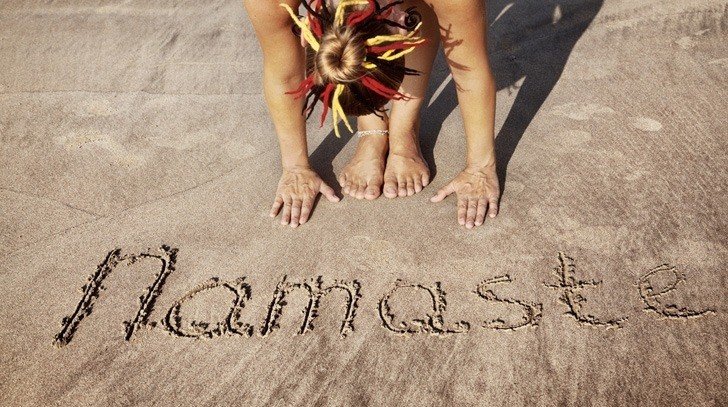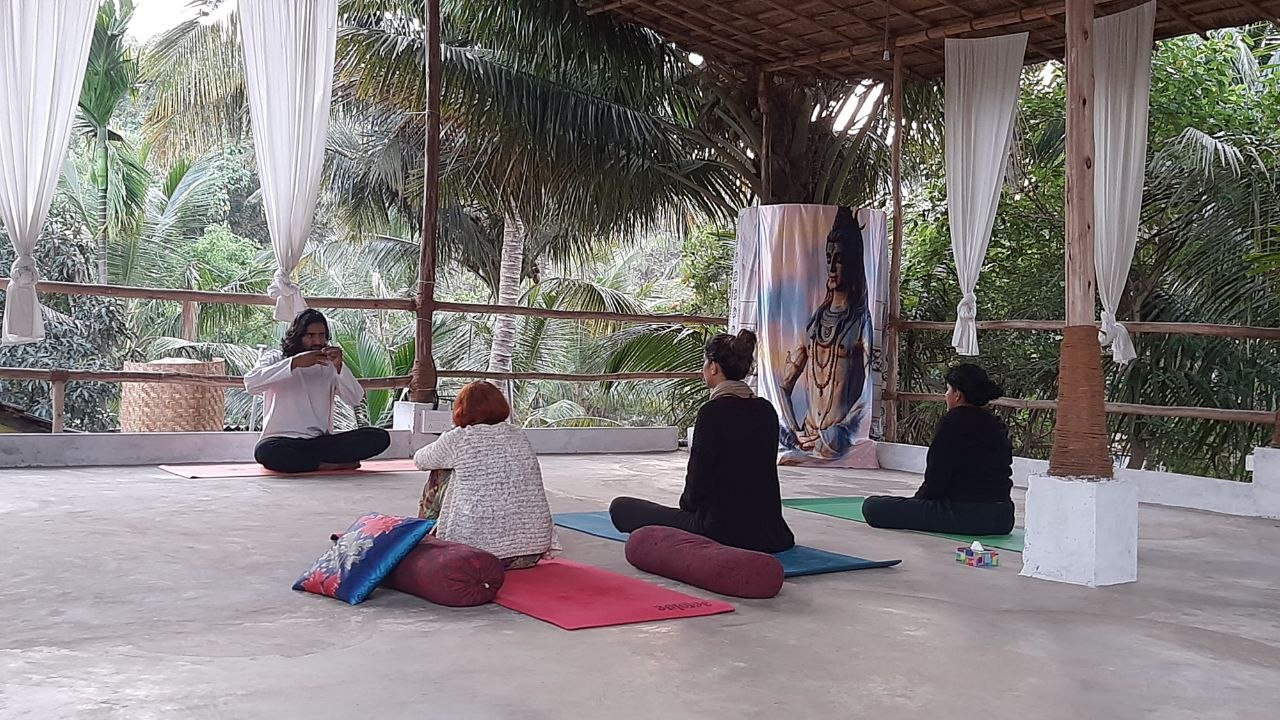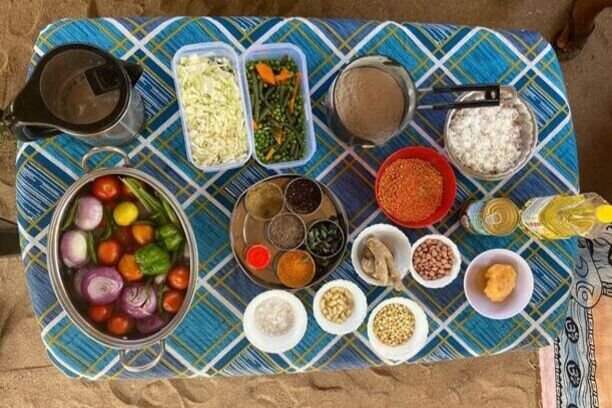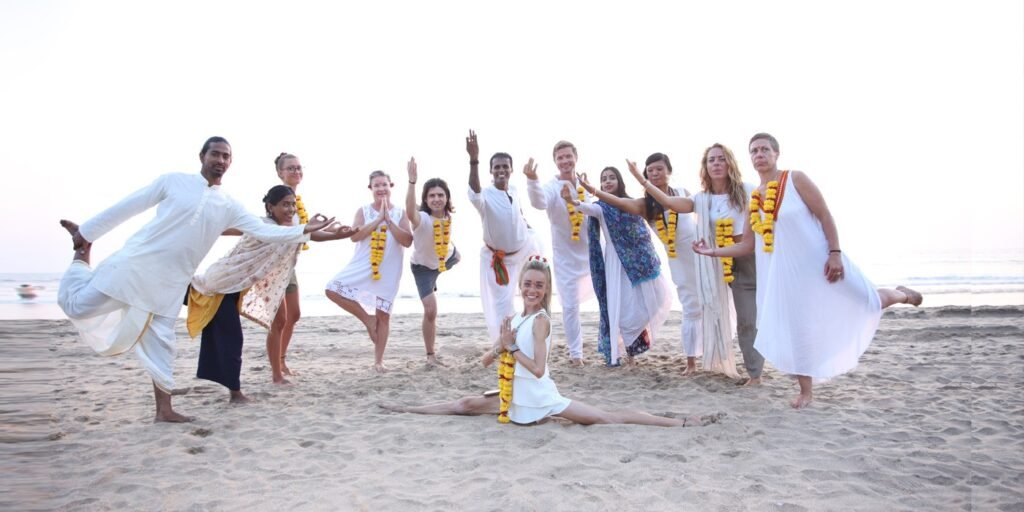Chair Pose or Utkatasana Yoga is a standing downward bend which effectively bolsters the core and lower body. The asana aligns the legs and feet as stumps of a chair while the knees bend and the buttocks come down as if upon an imaginary chair.
The Chair Pose can be modified in a number of ways to suit different degrees of challenge. Besides beginner-level Hatha and Ashtanga sequences, you will also find asana Utkatasana in Bikram Yoga.
Step-By-Step Instructions on How to Do Utkatasana (Chair Pose):
1. Keeping your feet about a slight 4 inches apart, come to stand on the mat with your spine strong and erect.
2. Extend both your arms out forward with your elbows facing sideways and the palms looking down. Correct any bending about your body and be mindful to remain perfectly straight.
3. Fold your knees gently first to a small degree and slowly going deeper, push your hips down until your lowered buttocks come parallel to your folded knee line. Imagine there is a base under your pelvis at this point and you are sitting in a chair.
4. The next of utkatasana steps is to engage as much mentally as physically with the pose. Keep your arms straightened out as before as though on the imaginary chair’s armrest. Concentrate and count your breaths deeply taken in and exhaled. Holding the pose is going to put a toll on your limbs but you must struggle to find a point of balance and equal weight distribution on the variously located pressure points of your feet.
5. Try to be aware and calm during your performance of utkatasana yoga pose. Fix your gaze to the front. Keep your spine elongated and struggle to help your legs from flailing. Hold the stance up to a minute.
Smile, because of happy vibes!
6. Un-fold the knees, come straight back up.
Alternatively, lower your pelvis gently down upon the mat and assume sukhasana.
Benefits & Advantages of Chair Pose:
Allay Back Pain with Spinal Stretch- Utkatasana Yoga benefits are known to keep the practitioner from degeneration and limitations of musculoskeletal range of motion in the back.
Lower back pain is ubiquitous after a certain age and evident even in the younger generation. There could be many reasons for the phenomenon—injury, poor posturing, wear and tear from the repetitive motion or age, or malnutrition-related degeneration. There are also some soft discs in between vertebrae which dry over time. The ones less supple can swell and even burst in the face of pressure.
The Chair Pose, in a sequence along with Cat Pose or the Marjaryasana, the Cow Pose or Bitilasana, and the Downward-Facing Dog or Adho Mukha Svanasana, can prevent and relieve such degenerative symptoms, and align the spine and pelvis correctly for a better overall posture.
Takes Care of Flat Feet Deformity- Flat Feet is a deformity which is accompanied with unease and pain. In normal physiology, there is a hollow under the arch of a foot when standing, with the inner part of the arch raised from the ground. In flat-feet condition, there are either no arches or it is very low. An uneven distribution of body weight on the feet from this condition causes pain in the ankles and back.
By mastering how to do Utkatasana to equally distribute the body weight upon the two feet acting like the stumps of a chair, you can practically eradicate the symptoms of pain and unease. With a sufficient practice, this alignment replicates in the practitioner’s usual posture.
Stimulates Immune Function- Yoga is famously known to have an adverse effect on stress and in the process, curbs down proneness to disease and infection, naturally. Besides, going through the motions of yogasanas also sets substances inside the body in a churn. This clears the sinuses, blockages in the blood and lymph channels, bringing inner body purification from pathogen and toxin accumulation. The Chair Pose especially takes care of musculoskeletal health and prevents degenerative disease in a big way.
Trims and Tones the Buttocks- The buttocks are reasonably compressed and made to bear the body weight through the Utkatasana steps which work well for toning and shaping them. The effects of this posture on the butt, thighs, hamstrings, and calves are similar to that of a squat. Try to it as far down as possible and make a 90-degree angle of your legs to get the right kind of toning pressure on your butt, thighs, calves, and hamstrings. The practice of this posture will also show results as a lower body strength training in due time.
Modifications & Variations of Chair Pose
Propping Up the Heels for Comfort- There is a certain degree of ankle dorsiflexion in Utkatasana and this can be problematic for some. By keeping a folded blanket under the heels, you can find more support. The foothold of support can be increased by spreading your toes. You can also perform an Utkatasana twist on each side in this supported posture.
Widening Across the Chest and Back- Alongside relieving painful symptoms of the lower body and feet, Utkatasana pose can also works on stiff shoulders. Try folding your hands at your heart in the Anjali Mudra, with the shoulders spread wide when coming into this pose.
Performing Against a Wall (especially for knee pain)- Having a wall for support to your back can have a mitigating effect on the force exerted upon your knees. Knee flexion as well as the rotation of the knee joints gets reduced with this stance. You should keep your feet hip-distance apart to reduce test on your knees further.
Overhead Arms- Instead of extending your arms by your sides, you can hoist them overhead to redistribute weight and find more ease along your back. However, this will also lessen the shoulder extension and reduce the degree of chest opening.
Keeping the Feet a Good Hip-Distance Apart (especially for pregnant women)- As for knee and hip pain, pregnancy too calls for a lesser thrust on the thighs and knees, making it ideal to keep your knees hip-distance apart. This will also better support the belly which is heavy and vulnerable.
Contraindications
A certain cautionary mindset required to perform yoga safely, like this posture should be off-limits in case of—chronic knee pain or injury, hurt in the lower back, ankle, and feet injury.
Also, headache, insomnia, and low blood pressure conditions are definitely red flags for doing this posture.
To know about the traditional aspects of this wonderful asana in further detail, explore our Yoga Teacher Training programs.
To know about Utkatasana Yoga in further detail, explore our Yoga Teacher Training In India.

















